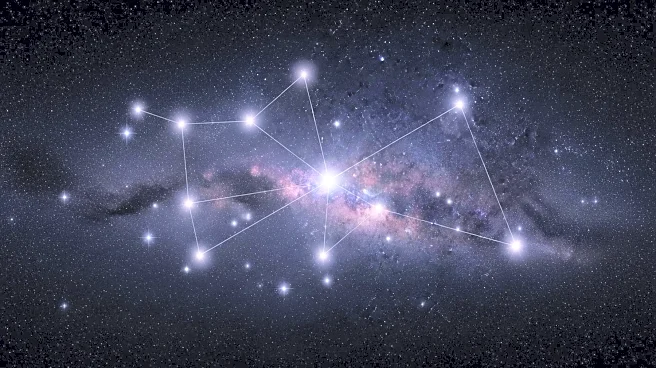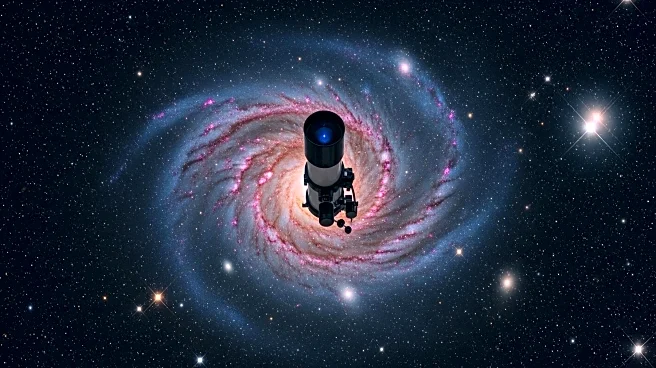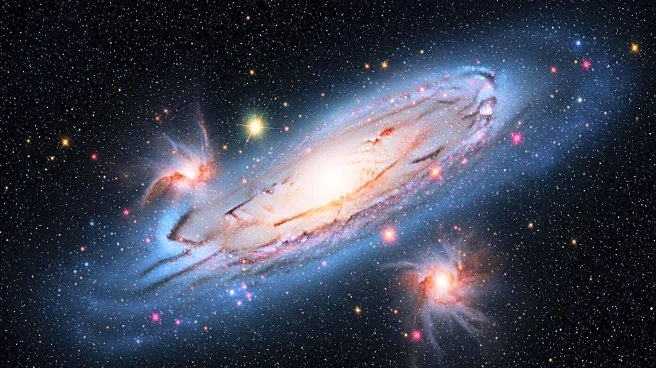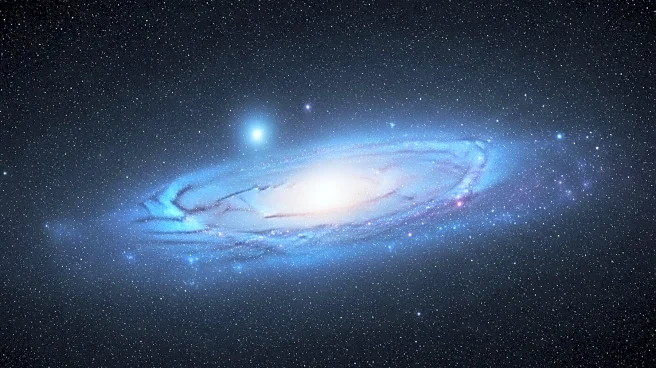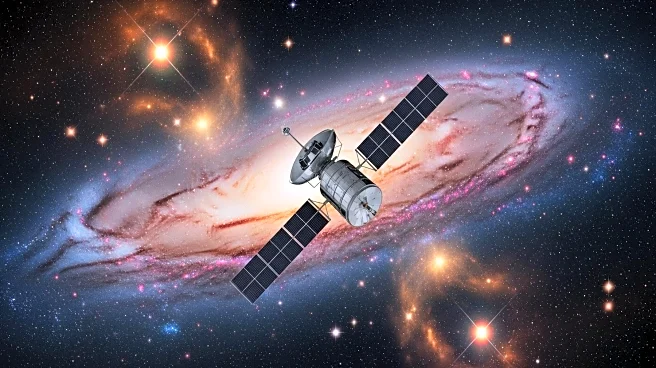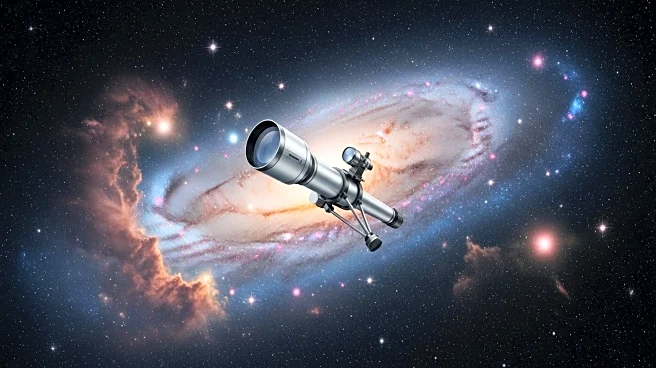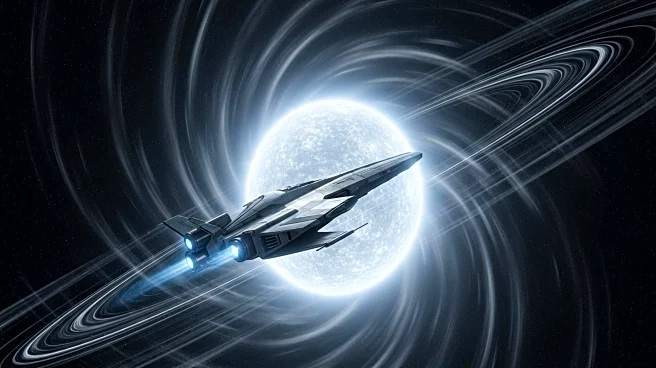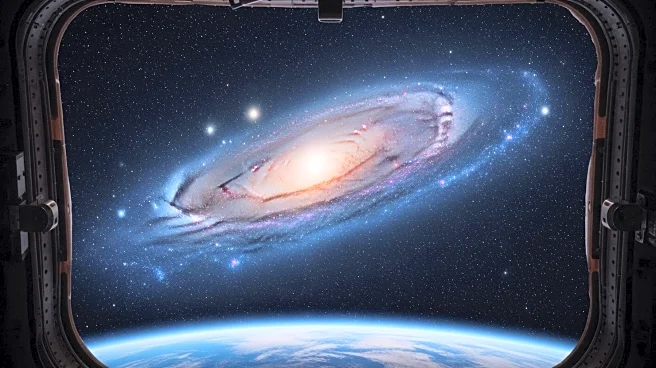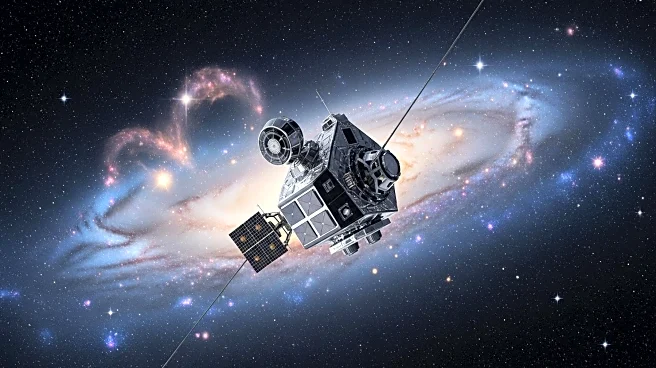What's Happening?
Astronomers have released the most comprehensive 3D map of stellar nurseries within the Milky Way galaxy, utilizing data from the European Space Agency's Gaia space telescope. This groundbreaking map provides a detailed view of star-forming regions that are typically obscured by dense clouds of gas and dust, making it challenging to determine their exact distances. The map was constructed using Gaia's observations of 44 million ordinary stars and 87 rare O-type stars, which are massive, young, and extremely bright. Extending 4,000 light-years from the sun, the map captures well-known regions such as the Orion-Eridanus superbubble, the Gum Nebula, and the California and North America nebulae. The data allows astronomers to trace the location and density of interstellar dust clouds and observe the influence of massive stars on their environments.
Why It's Important?
The creation of this detailed 3D map marks a significant advancement in our understanding of star formation and the structure of the Milky Way. By revealing the shapes, cavities, and relative positions of stellar nurseries, the map provides insights into how massive stars shape their surroundings, potentially triggering new waves of star birth. This information is crucial for astronomers studying the lifecycle of stars and the evolution of galaxies. The map's accuracy in matching other telescopic observations enhances confidence in its representation, offering a valuable tool for future research in astrophysics and cosmology.
What's Next?
Future releases of Gaia data promise even more precise measurements, which could expand the 3D view further into the galaxy. As astronomers continue to analyze Gaia's data, they anticipate gaining deeper insights into the dynamics of star-forming regions and the processes that govern star birth. This ongoing research may lead to new discoveries about the Milky Way's structure and the role of massive stars in galactic evolution.
Beyond the Headlines
The development of this 3D map also highlights the technological advancements in space observation and data processing. The ability to visualize complex cosmic structures in three dimensions represents a leap forward in astronomical research, potentially influencing how future missions are designed and executed. Additionally, the map's creation underscores the collaborative efforts of international scientific communities in expanding our understanding of the universe.

